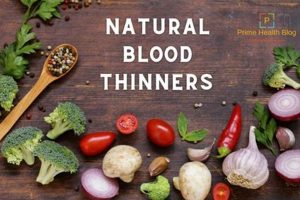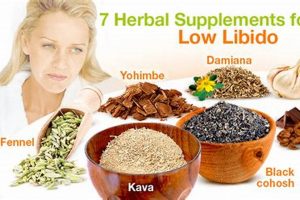Botanical preparations intended to support the function of the lungs and airways are gaining increasing attention. These products, often derived from plants and available in various forms, are used with the aim of easing breathing difficulties, reducing inflammation, or providing relief from coughs and congestion. Examples include extracts from plants traditionally used in respiratory remedies, formulated into capsules, teas, or tinctures.
The appeal of plant-derived remedies for supporting pulmonary well-being stems from a long history of traditional use and perceived lower risk of side effects compared to conventional medications. Historically, various cultures have utilized specific plants to address respiratory ailments. Benefits are purported to include anti-inflammatory actions, mucus-thinning properties, and bronchodilation, contributing to easier airflow and improved overall respiratory comfort.
The following sections will explore the science behind specific botanical ingredients commonly employed, discuss potential benefits and risks associated with their use, and provide guidance on selecting appropriate preparations.
Guidance on Utilizing Botanical Preparations for Pulmonary Support
The following recommendations aim to inform and guide individuals considering the integration of plant-derived options into their respiratory wellness strategy. These guidelines emphasize responsible usage and informed decision-making.
Tip 1: Consult a Healthcare Professional: Prior to incorporating any new substance, consultation with a qualified medical practitioner is crucial. This ensures compatibility with existing medical conditions and medications, and facilitates monitoring for potential adverse reactions.
Tip 2: Research Individual Ingredients: Thoroughly investigate the specific plants or extracts included in the preparation. Evaluate the available scientific literature regarding their efficacy, potential side effects, and interactions with other substances.
Tip 3: Verify Product Quality: Select products from reputable manufacturers that adhere to stringent quality control standards. Look for certifications that indicate third-party testing for purity, potency, and absence of contaminants.
Tip 4: Adhere to Recommended Dosage: Strictly follow the dosage instructions provided by the manufacturer or healthcare professional. Exceeding the recommended dosage may increase the risk of adverse effects without necessarily enhancing the benefits.
Tip 5: Monitor for Adverse Reactions: Closely observe for any signs of allergic reactions or other adverse effects, such as skin rashes, gastrointestinal disturbances, or breathing difficulties. Discontinue use immediately and seek medical attention if such symptoms occur.
Tip 6: Understand Potential Interactions: Be aware of potential interactions with prescription medications, over-the-counter drugs, and other supplements. Some botanical compounds may affect the metabolism or efficacy of other substances.
Tip 7: Consider Individual Needs: Recognize that individual responses may vary significantly. Factors such as age, weight, overall health, and genetic predisposition can influence the effectiveness and tolerability of plant-derived respiratory support.
Following these guidelines promotes responsible and informed use of botanical preparations. Emphasis should be placed on individualized approaches and collaboration with healthcare professionals.
The subsequent sections will delve into specific botanical ingredients and their potential roles in promoting improved breathing and overall lung wellness.
1. Efficacy
The evaluation of efficacy stands as a paramount consideration when assessing botanical preparations intended for respiratory support. Establishing demonstrable effectiveness necessitates rigorous scientific scrutiny.
- Clinical Trial Evidence
Randomized, controlled clinical trials represent the gold standard for determining whether a particular botanical substance demonstrably improves respiratory outcomes. Studies evaluating changes in lung function parameters, symptom scores, and quality of life metrics provide crucial data. For example, studies examining the effectiveness of Andrographis paniculata for upper respiratory tract infections often measure symptom duration and severity.
- Mechanism of Action
Understanding the underlying biological mechanisms by which a botanical ingredient exerts its effects is important. Identifying specific compounds and their interactions with respiratory tissues or immune cells can provide a rationale for observed clinical benefits. For instance, the bronchodilatory effects of certain plants may be linked to specific compounds that relax smooth muscle in the airways.
- Dosage and Standardization
Establishing effective and consistent dosages is critical for ensuring reliable results. Standardized extracts, which contain consistent levels of key active compounds, enhance the reproducibility of clinical studies and facilitate accurate dosing. Variability in the concentration of active constituents can significantly impact the observed efficacy.
- Comparative Effectiveness
Assessing the efficacy of botanical options relative to conventional treatments provides valuable context. Comparative studies can reveal whether a particular substance offers similar benefits, potentially with fewer side effects, or if it serves as a complementary approach alongside conventional therapies. For example, a study might compare the effectiveness of a plant-derived cough suppressant to a standard over-the-counter medication.
Thorough evaluation of clinical trial data, understanding of mechanisms of action, standardization of dosage, and comparative effectiveness studies collectively contribute to a comprehensive assessment of whether a given plant-derived product truly provides tangible benefits for respiratory well-being. Lack of rigorous scientific evidence undermines claims of efficacy and warrants caution in the use of such products.
2. Safety
The paramount consideration regarding botanical substances intended for respiratory support revolves around safety. Potential adverse effects, interactions with existing medications, and contraindications for specific populations necessitate a thorough evaluation of risk factors. The inherent complexity of plant-derived compounds and the variability in individual responses contribute to the importance of a cautious approach. For example, ephedra, once widely used as a decongestant, was subsequently banned due to significant cardiovascular risks, highlighting the potential dangers of unregulated botanical substances. Similarly, preparations containing high levels of pyrrolizidine alkaloids (PAs), found in some plants, can cause severe liver damage with prolonged use. This exemplifies the need for stringent quality control and awareness of potential toxicities.
Pre-existing medical conditions, particularly those affecting the liver or kidneys, may increase the risk of adverse reactions to certain botanical preparations. Pregnancy and lactation also warrant heightened caution, as some compounds may pose risks to the developing fetus or infant. Furthermore, interactions with prescription medications represent a significant concern. For example, St. John’s Wort, while not specifically used for respiratory conditions, is a potent inducer of liver enzymes and can reduce the efficacy of numerous drugs, including certain immunosuppressants and anticoagulants. Similar interactions may occur with other botanicals commonly used for respiratory support. Therefore, a comprehensive review of a patient’s medical history and current medications is essential before recommending or utilizing any plant-derived product.
In summary, the safety profile of botanical preparations for respiratory health demands rigorous scrutiny. Potential toxicities, pre-existing conditions, and drug interactions must be carefully considered. A comprehensive risk assessment, coupled with informed decision-making and consultation with a healthcare professional, is crucial to minimizing potential harm and ensuring the responsible use of these substances. The continued monitoring of adverse event reports and the establishment of robust regulatory frameworks are essential for promoting patient safety in this domain.
3. Quality
The aspect of quality constitutes a critical determinant in the safe and effective utilization of botanical substances intended to support respiratory health. The inherent variability in plant composition and the complexity of extraction and manufacturing processes underscore the importance of stringent quality control measures.
- Source Material Authentication
Accurate identification of the botanical species used in a preparation is essential. Substitution or adulteration with incorrect or inferior plant material can lead to reduced efficacy or, in some cases, adverse health consequences. Microscopic analysis, DNA barcoding, and other analytical techniques are employed to verify the authenticity of the raw materials.
- Cultivation and Harvesting Practices
The environmental conditions under which a plant is grown, as well as the timing and methods used for harvesting, can significantly impact the concentration of active compounds. Plants grown in contaminated soil may accumulate heavy metals or other toxins, while improper drying or storage can lead to degradation of active constituents and the growth of molds. Good Agricultural and Collection Practices (GACP) aim to standardize these processes to ensure consistent quality.
- Extraction and Manufacturing Processes
The methods used to extract and process botanical materials can influence the composition and purity of the final product. Solvent selection, temperature control, and filtration techniques are all critical factors. Substandard extraction processes may fail to isolate key active compounds or may introduce contaminants into the product. Good Manufacturing Practices (GMP) provide guidelines for ensuring the quality and safety of manufactured products.
- Standardization and Testing
Standardized extracts contain consistent levels of specific active compounds, ensuring more predictable therapeutic effects. Rigorous testing for identity, purity, potency, and contaminants is essential. This includes assays for heavy metals, pesticides, microbial contamination, and residual solvents. Certificates of Analysis (COAs) provide documentation of these test results and demonstrate adherence to quality standards.
The multifaceted nature of quality necessitates a comprehensive approach that encompasses authentication of source materials, adherence to good agricultural and manufacturing practices, and rigorous testing for purity and potency. Consumers and healthcare professionals should prioritize products from reputable manufacturers that demonstrate a commitment to quality assurance, thereby mitigating the risks associated with substandard botanical preparations. The consistency and reliability afforded by quality control measures are paramount in ensuring the safe and effective use of these substances for respiratory support.
4. Interactions
The potential for interactions between botanical substances used for respiratory support and conventional medications or other supplements is a significant consideration. These interactions can alter the efficacy or toxicity of either the botanical preparation or the co-administered substance, potentially leading to adverse outcomes.
- Pharmacokinetic Interactions
These interactions involve alterations in the absorption, distribution, metabolism, or excretion of a drug or botanical substance. For instance, certain botanicals can inhibit or induce cytochrome P450 enzymes in the liver, which are responsible for metabolizing many medications. This can lead to increased or decreased drug levels in the body, potentially resulting in toxicity or therapeutic failure. As an example, St. John’s Wort, though not typically used for respiratory ailments, is a well-known CYP3A4 inducer, potentially reducing the effectiveness of corticosteroids commonly prescribed for respiratory conditions like asthma.
- Pharmacodynamic Interactions
These interactions involve synergistic or antagonistic effects between a botanical substance and a drug at the site of action. For example, combining a botanical with sedative properties, such as valerian, with an antihistamine could enhance the sedative effects, leading to excessive drowsiness or impaired cognitive function. Conversely, a botanical with stimulant properties might counteract the effects of a sedative. With regards to respiratory health, combining multiple substances which may thin the blood, like garlic, ginger, and NSAIDs, could significantly increase the risk of bleeding.
- Herb-Drug Interactions Affecting Specific Respiratory Medications
Specific respiratory medications, such as bronchodilators, inhaled corticosteroids, and leukotriene inhibitors, are susceptible to interactions with certain botanicals. For example, the concurrent use of licorice with inhaled corticosteroids could potentially exacerbate the risk of corticosteroid-induced side effects due to licorice’s potential to inhibit corticosteroid metabolism. Similarly, botanicals with anti-inflammatory properties might interact with corticosteroids, either enhancing or diminishing their effects.
- Interactions with Anticoagulants and Antiplatelet Agents
Some botanical substances possess inherent anticoagulant or antiplatelet properties, which can increase the risk of bleeding when combined with anticoagulant or antiplatelet medications such as warfarin, aspirin, or clopidogrel. Examples of botanicals with such properties include garlic, ginger, and ginkgo biloba. Individuals taking these medications should exercise caution and consult with their healthcare provider before using any botanical preparations for respiratory support, as the combined effects could lead to serious bleeding complications.
The potential for interactions underscores the importance of a comprehensive medication history and careful consideration of potential synergistic or antagonistic effects before recommending or using botanical preparations for respiratory health. Healthcare providers must be vigilant in assessing the risk of interactions and providing appropriate guidance to patients. Further research is needed to fully elucidate the complex interactions between botanical substances and conventional medications commonly used in respiratory care.
5. Regulation
The regulatory landscape governing botanical substances intended for respiratory support is complex and varies significantly across different countries. This variation impacts the availability, quality, and safety of these products, necessitating a clear understanding of the legal frameworks in place.
- Varying Definitions and Classifications
Different regulatory bodies may classify botanical substances as foods, dietary supplements, or drugs, depending on their intended use and composition. In some jurisdictions, products marketed for therapeutic purposes are subject to stricter regulations than those sold as general health supplements. For example, a product marketed as a cough remedy may be subject to more rigorous testing and approval processes than a similar product marketed as a general immune booster. This variance can affect the types of claims manufacturers are permitted to make and the level of evidence required to support those claims.
- Manufacturing Standards and Quality Control
Regulations pertaining to manufacturing standards and quality control differ widely. Some countries have established Good Manufacturing Practices (GMP) specifically for herbal products, while others rely on general food safety regulations. GMP guidelines address issues such as raw material sourcing, manufacturing processes, and product testing to ensure consistency and purity. However, enforcement of these regulations can vary, leading to inconsistencies in product quality across different markets. The absence of robust GMP standards can increase the risk of contamination, adulteration, and inaccurate labeling.
- Labeling Requirements and Health Claims
Labeling requirements for botanical substances also differ considerably. Regulations may dictate the information that must be included on product labels, such as ingredient lists, dosage instructions, and potential warnings. Health claims, which describe the intended benefits of a product, are often subject to strict scrutiny. Some jurisdictions require manufacturers to provide scientific evidence to support health claims, while others allow more lenient standards. Misleading or unsubstantiated health claims can mislead consumers and potentially endanger their health. For instance, claims about curing respiratory illnesses without adequate scientific backing are frequently scrutinized.
- Post-Market Surveillance and Enforcement
Post-market surveillance and enforcement mechanisms are crucial for ensuring ongoing compliance with regulations and addressing safety concerns. Regulatory agencies may monitor adverse event reports, conduct product testing, and take enforcement action against companies that violate regulations. The effectiveness of post-market surveillance depends on the availability of resources and the level of cooperation between regulatory agencies and healthcare professionals. A robust surveillance system can help identify and address potential safety issues before they cause widespread harm. Instances where serious adverse effects are reported often lead to product recalls and strengthened regulations.
The inconsistencies in the regulatory landscape for botanical substances intended for respiratory support pose challenges for both consumers and manufacturers. Consumers need to be aware of the regulatory environment in their jurisdiction and exercise caution when purchasing products from unregulated sources. Manufacturers must navigate a complex web of regulations to ensure compliance and market their products responsibly. Harmonization of regulatory standards across different countries could improve the quality, safety, and transparency of these products and promote greater consumer confidence.
Frequently Asked Questions
This section addresses common inquiries regarding the use of plant-derived products for supporting pulmonary well-being. The information provided aims to offer clarification and guidance on the responsible use of these substances.
Question 1: Are botanical supplements regulated for safety and efficacy?
The regulation of these products varies considerably across different regions. In some jurisdictions, they are classified as dietary supplements and are subject to less stringent regulations than pharmaceutical drugs. Consequently, claims of efficacy may not be rigorously evaluated, and quality control standards may differ. Consult with a qualified healthcare professional to ensure the products considered meet acceptable quality and safety standards.
Question 2: Can botanical supplements replace conventional medical treatments for respiratory conditions?
Botanical supplements should not be viewed as replacements for established medical treatments for respiratory illnesses such as asthma, chronic obstructive pulmonary disease (COPD), or infections. They may, in some cases, serve as complementary therapies, but should only be used under the guidance of a healthcare provider who can integrate them into a comprehensive treatment plan. Discontinuing prescribed medications in favor of unproven alternatives can have serious health consequences.
Question 3: What are the potential side effects of botanical supplements for respiratory health?
Plant-derived products are not inherently free from side effects. Potential adverse reactions can include allergic reactions, gastrointestinal disturbances, and interactions with prescription medications. Certain botanicals may be contraindicated for individuals with specific medical conditions, such as liver or kidney disease. Careful consideration of potential risks and benefits is essential.
Question 4: How can product quality be ensured when purchasing botanical supplements?
Select products from reputable manufacturers that adhere to stringent quality control standards. Look for certifications from independent testing organizations that verify the identity, purity, and potency of the ingredients. Certificates of Analysis (COAs) can provide detailed information about product testing and quality. Avoid products with vague labeling or those from unknown sources.
Question 5: Are botanical supplements safe for pregnant or breastfeeding women?
The safety of many botanical supplements during pregnancy and breastfeeding has not been adequately studied. Some plant compounds may pose risks to the developing fetus or infant. Pregnant or breastfeeding women should consult with their healthcare provider before using any botanical preparation.
Question 6: How should botanical supplements be used in conjunction with prescription medications?
The concurrent use of botanical supplements and prescription medications requires careful consideration due to the potential for interactions. Some botanicals can alter the metabolism or effects of certain drugs. Consult with a healthcare professional or pharmacist to assess potential interactions and ensure safe usage.
Responsible utilization necessitates a thorough understanding of the potential benefits and risks. Collaboration with qualified healthcare professionals is essential for making informed decisions regarding the integration of plant-derived substances into respiratory care.
The subsequent sections will delve into specific botanical preparations and their potential role in the support of respiratory system.
Conclusion
The preceding discussion underscores the complex landscape surrounding herbal supplements for respiratory health. While historical and anecdotal evidence suggests potential benefits, rigorous scientific validation, standardized quality control, and comprehensive safety assessments remain critical. Potential interactions with conventional medications and the variability in individual responses further necessitate a cautious and informed approach.
The responsible integration of botanical substances into respiratory care demands a commitment to evidence-based decision-making and collaboration with qualified healthcare professionals. Further research is essential to elucidate the true efficacy and safety profiles of these preparations, thereby ensuring the well-being of individuals seeking alternative or complementary respiratory support.







